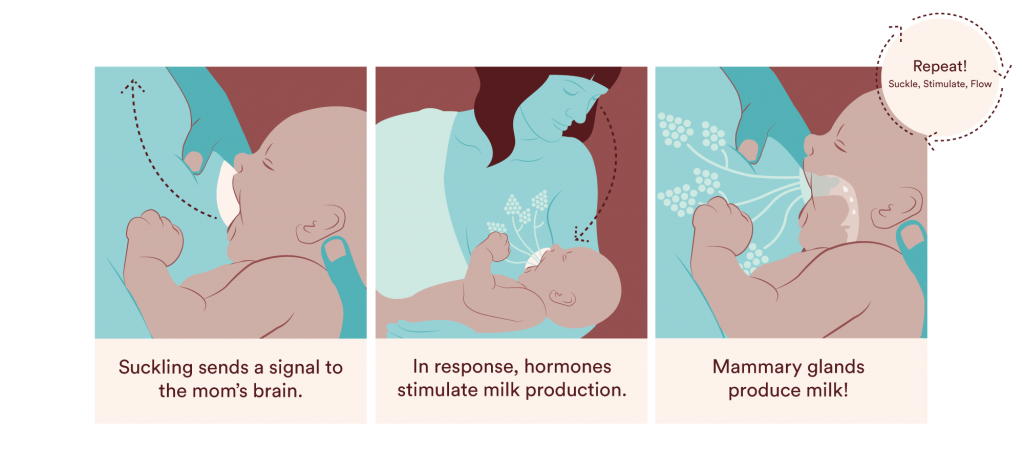Breastmilk Production
BY BOOBER
Understanding your breastmilk production
Breastfeeding can be a wonderful experience, but it can also be stressful— especially in those first sleep-deprived days when you and your baby are just getting the hang of things. One thing that can bring peace of mind is cutting through the mystery of milk supply. Understanding your breastmilk production during the first few days and the science behind this critical process will help make sure that you and your baby get off to the very best start—or the breast start, as we like to say.
At first, it’s all about hormones
Lactation is hormonally driven during the first few days. Long before birth, your body starts Lactogenesis 1 and begins making colostrum, the concentrated, nutrient-filled, immune-supportive newborn milk your baby will consume first. Typically two to three days after delivery, Lactogenesis 2 begins as colostrum transitions into mature milk; your body’s changing hormones trigger an increase in breast fullness (sometimes described as milk “coming in”).
How breastmilk production works

Frequent feeding helps you make breastmilk. When your baby suckles at your breast it stimulates the release of hormones called oxytocin and prolactin. Oxytocin serves many purposes, but one of its most critical (besides orgasms! And bonding. And labor contractions. See, it’s amazing!) is stimulating milk flow, by causing your milk-making glands to contract so that milk flows to your baby. The other critical hormone at work is prolactin. Prolactin tells your body to make milk, creating a virtuous cycle: Breastfeeding stimulates prolactin and oxytocin, which stimulates milk production and flow, which allows your baby to take in breast milk, which stimulates more prolactin and oxytocin! Because of this, frequent feeding is critical to laying down long-term breastmilk production.
Frequent, small feeds are normal
Often, parents worry when their babies want to feed very frequently in the beginning, because they think this is a sign that the baby isn’t getting enough milk. In fact, it’s totally normal for newborns to only consume about 1-2 tablespoons of colostrum in the first 24 hours. The main objective here is to build a good milk supply because once lactation is established, Lactogenesis 3 takes over, and breastfeeding becomes primarily a supply and demand-driven process — or as we like to say in lactation-world, “demand and supply” as the baby “demands” milk by suckling, which in turn increases supply. Feeding frequently and maximizing skin-to-skin contact with your infant are both great ways to increase breastmilk production. A Lactation Professional can help if you are not sure you are doing things right.
Supply concerns
When breastfeeding, your body makes milk 24/7. The emptiness of the breast affects how fast that production happens, though. Full breasts produce milk more slowly than empty breasts, so feeding (or pumping) more frequently is helpful if you’re trying to increase milk output. Again reach out to a lactation professional if you need more guidance - while it is natural, lactating is not always easy!
Get support
Understanding your breastmilk production during the first few days can be very helpful to a good start, but remember, every person—and baby!—is different. Lactation consultants can help with latching concerns, provide tips about increasing (or decreasing) milk supply and provide support and reassurance.